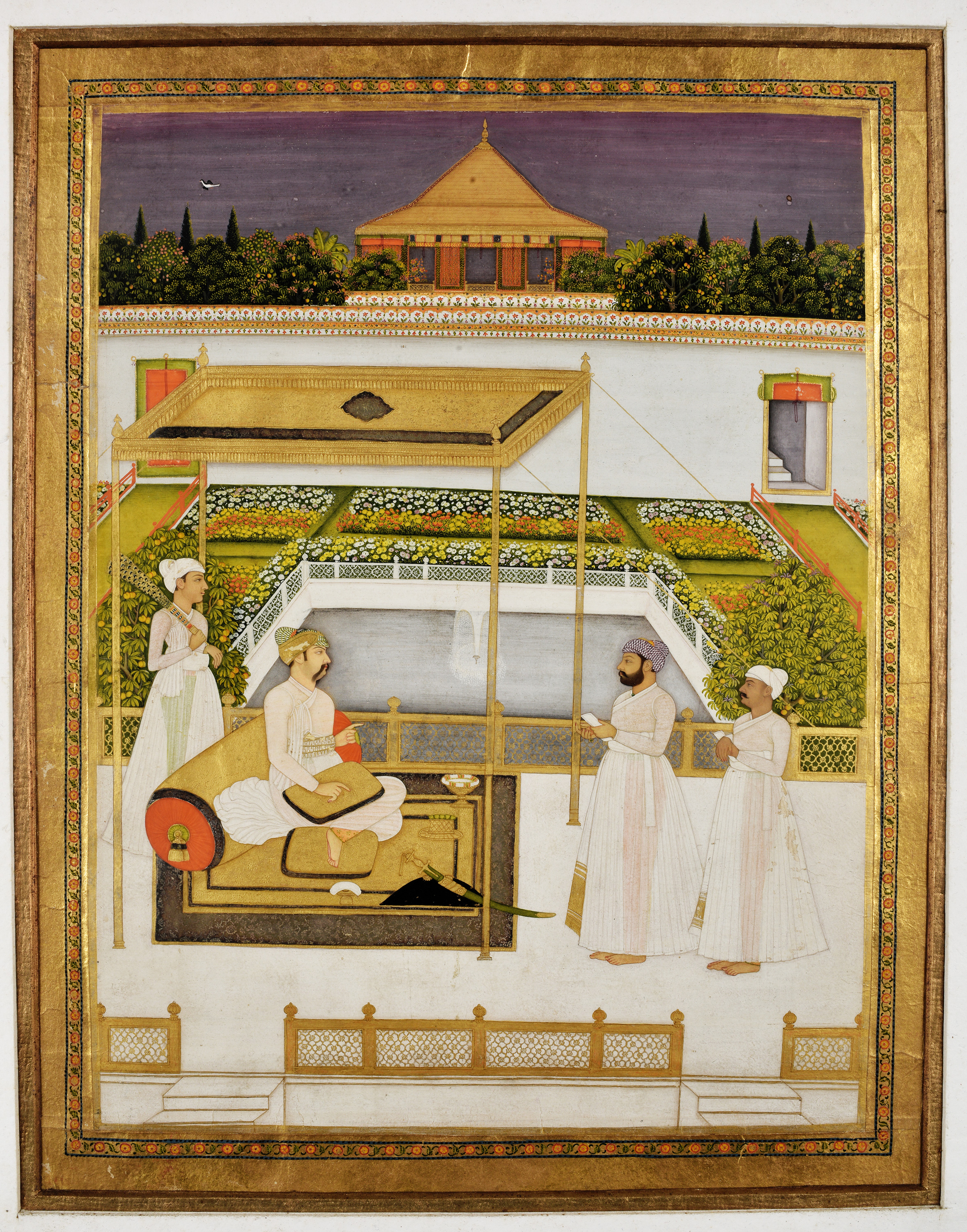Nawab Asaf-ud-Daulah of Awadh in a Garden
Original Location: Awadh
Present Location: National Museum, New Delhi
Date: 1750 CE
Period: Early Modern
Material: Paper
Objects: Painting
Style: Mughal Miniature Painting
Dimensions: H 39.8 x W 30.6 cm
Credits: National Museum, New Delhi
This colorful painting is of the Nawab of Awadh, Asaf-ud-Daula is made from natural colors. It was originally from Murshidabad, dating back to 1750 CE approximately. The size of this painting is 39.8 x 30.6cm and one can find it at the Miniature Painting Gallery at the National Museum, New Delhi.
Asaf-ud-Daula was the Nawab Wazir of Oudh (Awadh) from 1775 to 1797. He was the son of Shuja-ud-Daula. His mother and grandmother were the Begums of Awadh. Asaf-ud-Daula was married to the daughter of Imtiaz-ud-Daula, a nobleman who wielded considerable influence in the court of the Emperor at Delhi. He died in 1797 in Lucknow.
One can see Asaf-ud-Daula sitting on a pavilion with a shamiana made of gold, covering him. He is sitting with a backrest and two pillows. In terms of his trousseau, he is depicted wearing an angarkha (a traditional upper garment worn by men in the Indian subcontinent). Next to him is his sword which is green in color and on it one can notice a gold sheath and the gold handle as well. Behind him stand his attendants holding morechhal (peacock feathers) to fan him. Asaf-ud-Daula is being approached by two messengers. One can see that he is sitting in a marble pavilion which has a golden boundary. In the background a pond can be seen with a fountain in it. Under the patronage of the Nawabs of Awadh, a delicate style of painting flourished in which the artist expressed their delight in depicting lovely gardens and palaces.
Gold and beige are the dominant colors of the painting. This beautiful painting has a gold border which has flowers and leaves. The colours have been used to signify the nobility of the subject in focus. Paintings were not candid captures of everyday life, instead they can be understood as manufactured settings curated to perform certain predetermined functions such as the display of power, prestige, luxury and comfort.
 Government of Indiaa
Government of Indiaa


 Recognizing the ongoing need to position itself for the digital future, Indian Culture is an initiative by the Ministry of Culture. A platform that hosts data of cultural relevance from various repositories and institutions all over India.
Recognizing the ongoing need to position itself for the digital future, Indian Culture is an initiative by the Ministry of Culture. A platform that hosts data of cultural relevance from various repositories and institutions all over India.
